On View
Photographer Catches Intimate Moments With Muhammad Ali at New-York Historical Society
The boxing legend would have been 75 today.

The boxing legend would have been 75 today.

Sarah Cascone

In 1965, George Kalinsky was a kid fresh out of college, with a degree in industrial design and dreams of being an artist, when he had a chance encounter that would change the course of his life.
“I was walking down 5th Street in Miami and I saw Muhammad Ali on the corner,” Kalinsky told artnet News at the press preview for his exhibition, “I Am King of the World: Photographs of Muhammad Ali by George Kalinsky,” which is currently on view at the New-York Historical Society. “I had never seen anyone famous before.”
Undaunted, Kalinsky, camera in hand, followed Ali into the gym and managed to talk himself into the work out session by claiming to be the official photographer of Madison Square Garden.
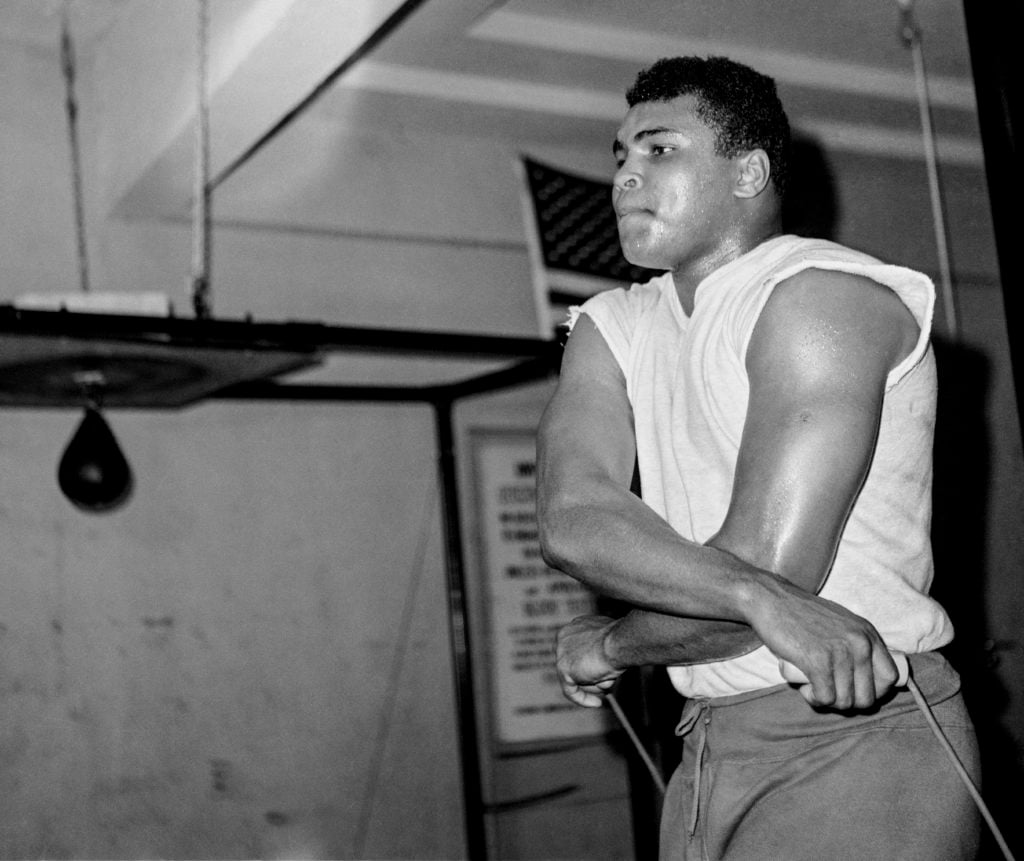
George Kalinsky, Muhammad Ali working out at the 5th St. Gym in Miami (1965). Courtesy George Kalinsky from the first roll of film that shot of his career.
Up until that point, “I only took pictures of my family,” admitted Kalinsky, who confessed that also knew nothing about boxing. Nevertheless, he took shot one roll of film of Ali practicing, brought it straight to MSG, and on the strength of those images, landed himself the very job he had lied about having. Some might have been intimidated, but not Kalinksy: “I never was afraid of anything. I always wanted the opportunity.”
In addition to starting a long and fruitful career—Kalinsky has worked at the Garden ever since—that day also marked the beginning of a close friendship with Ali, whom he photographed many times over the years. Those images are currently on view alongside drawings and paintings of the great boxer by LeRoy Neiman in the accompanying exhibition, “Muhammad Ali, LeRoy Neiman, and the Art of Boxing.” Located in an adjacent gallery on the museum’s second floor, the smaller of the two shows includes posters, paintings, and even a robe Ali wore before one of his fights.
Neiman, who is known for his paintings and screen prints of music and sporting events, met Ali while the athlete was practicing for a match in Harlem in 1962. When Ali spotted the artist at work, he grabbed a pencil and added a sketch of his own. The collaborative work is included in the show, along with another drawing made by Ali at Neiman’s behest, predicting his ascendancy to world champion. Neiman encouraged Ali’s latent artistic talent, helping him learn to draw.

George Kalinsky, Joe Frazier and Muhammad Ali (1971). Courtesy George Kalinsky. The first of the famous “head to head” shots of Joe Frazier and Muhammad Ali or any boxers. They were preparing for their epic match-up in 1971, the Fight of the Century, at Madison Square Garden.
As his friendship with Ali developed, Neiman became a regular presence alongside the ring, dashing off drawings and paintings of the athlete in action all over the world, from 1974’s “Rumble in the Jungle,” in what was then Zaire, to 1975’s “Thrilla in Manila,” where Ali fought Joe Frazier. “Ali was one of his favorite subjects,” exhibition curator Lily Wong told artnet News, noting that the two men used to spend time “hanging out in the living room just drawing,”
“For Leroy, everything was a canvas,” she added, pointing to an expressive drawing on the cover of a program from the 1964 bout with Sonny Liston in which Ali, then still named Cassius Clay, first claimed the World Heavyweight Championship.
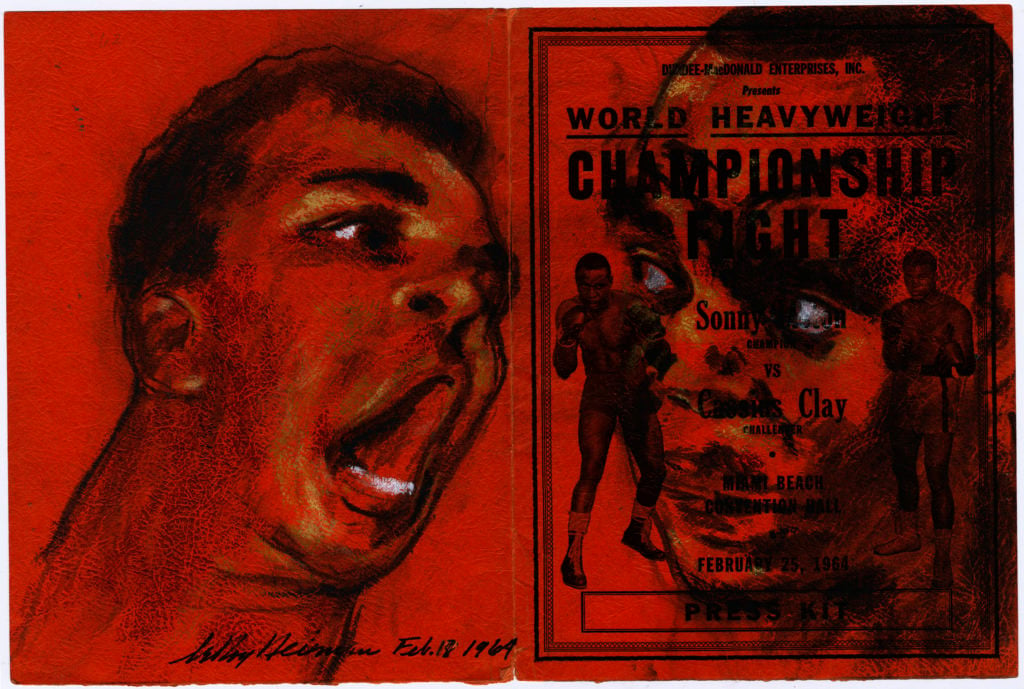
LeRoy Neiman, Clay and Liston, February 18, 1964. Courtesy LeRoy Neiman Foundation.
“All the press was sure he was going to lose, that he was just a loudmouth,” said Wong. Instead, the sport was changed forever by Ali’s unconventional, and graceful, boxing style.
The show, organized in collaboration with the LeRoy Neiman Foundation, reads as a list of career highlights for Ali, with artwork created at and for some of his most important matches. Neiman captioned many of his in-ring drawings with commentary about the fights, such as “Cassius prancing, dancing side-to-side, actually seems to seems to tower over the lumbering heavy-footed champion.”
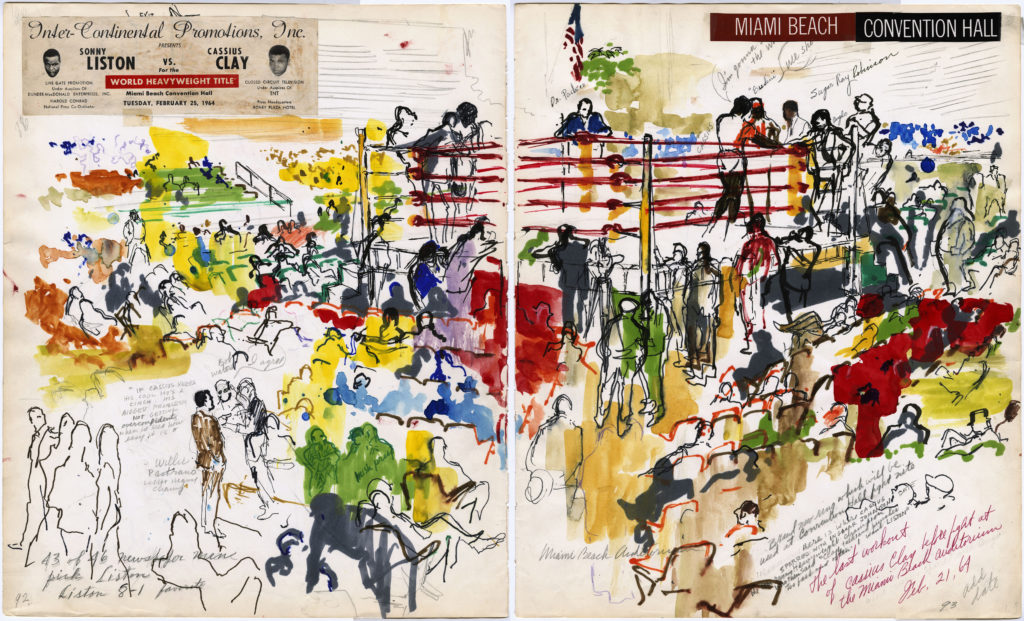
LeRoy Neiman, Clay’s last workout before Liston fight, February 21, 1964. Courtesy LeRoy Neiman Foundation.
“I could have done a show that was just great art, but I did want to tell Ali’s story evolution as an athlete and a public figure,” said Wong. Ali, who would have been 75 years old on January 17, died on June 3 last year, one of the most significant celebrity deaths in a year that was full of them.
Beyond their shared subject, what ties the two exhibitions together is the close relationship Ali had with both Kalinsky and Neiman.
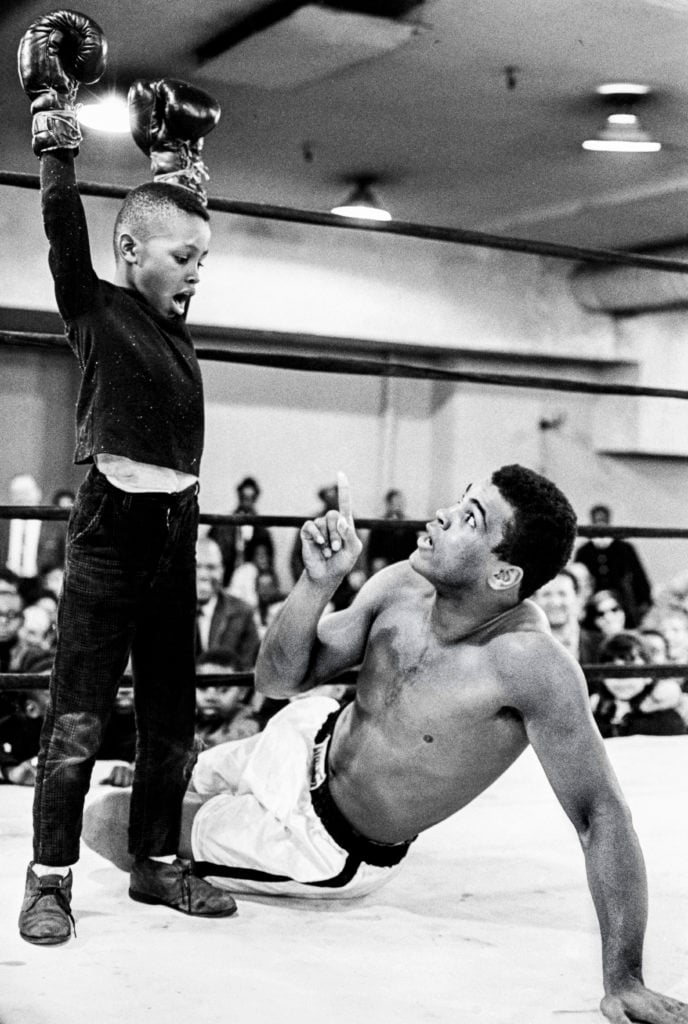
George Kalinsky, Muhammad Ali training at Madison Square Garden (1967). Courtesy George Kalinsky.
Ali, who had a soft spot for children, took a break from a workout to banter with a young fan. Kalinsky recalled this young admirer announcing, “I am the greatest for a moment.”
“There’s this bond of friendship between them that George was able to transfer into his photographs,” exhibition curator Marilyn Kushner told artnet News, pointing to a 1967 photo of Ali in bed with a coloring book, taken as he was grappling with the decision to become a conscientious objector during the Vietnam War.
“He was in the business of brutal sport, the art of brutality, but he was also probably one of the biggest peacemakers of all time,” Kalinsky said.
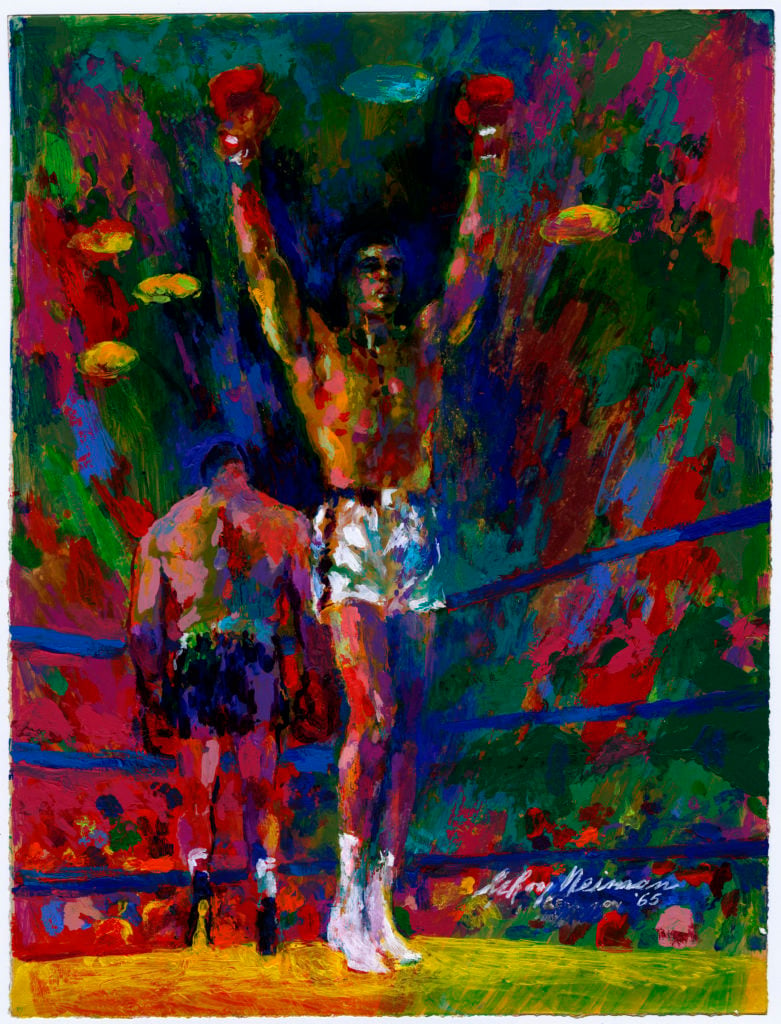
LeRoy Neiman, Muhammad Ali and Sonny Liston (1965). Courtesy LeRoy Neiman Foundation.
“I was able to get photos that captures Muhammad Ali as a thinking man, as opposed to Muhammad Ali the fighter,” he added. “To photograph someone with the iconic stature that Muhammad Ali had in private moments… I was very privileged to be part of the journey.”
“I Am King of the World: Photographs of Muhammad Ali by George Kalinsky” and “Muhammad Ali, LeRoy Neiman, and the Art of Boxing” are on view at the New-York Historical Society, 170 Central Park West at Richard Gilder Way (77th Street), December 11, 2016–March 26, 2017.